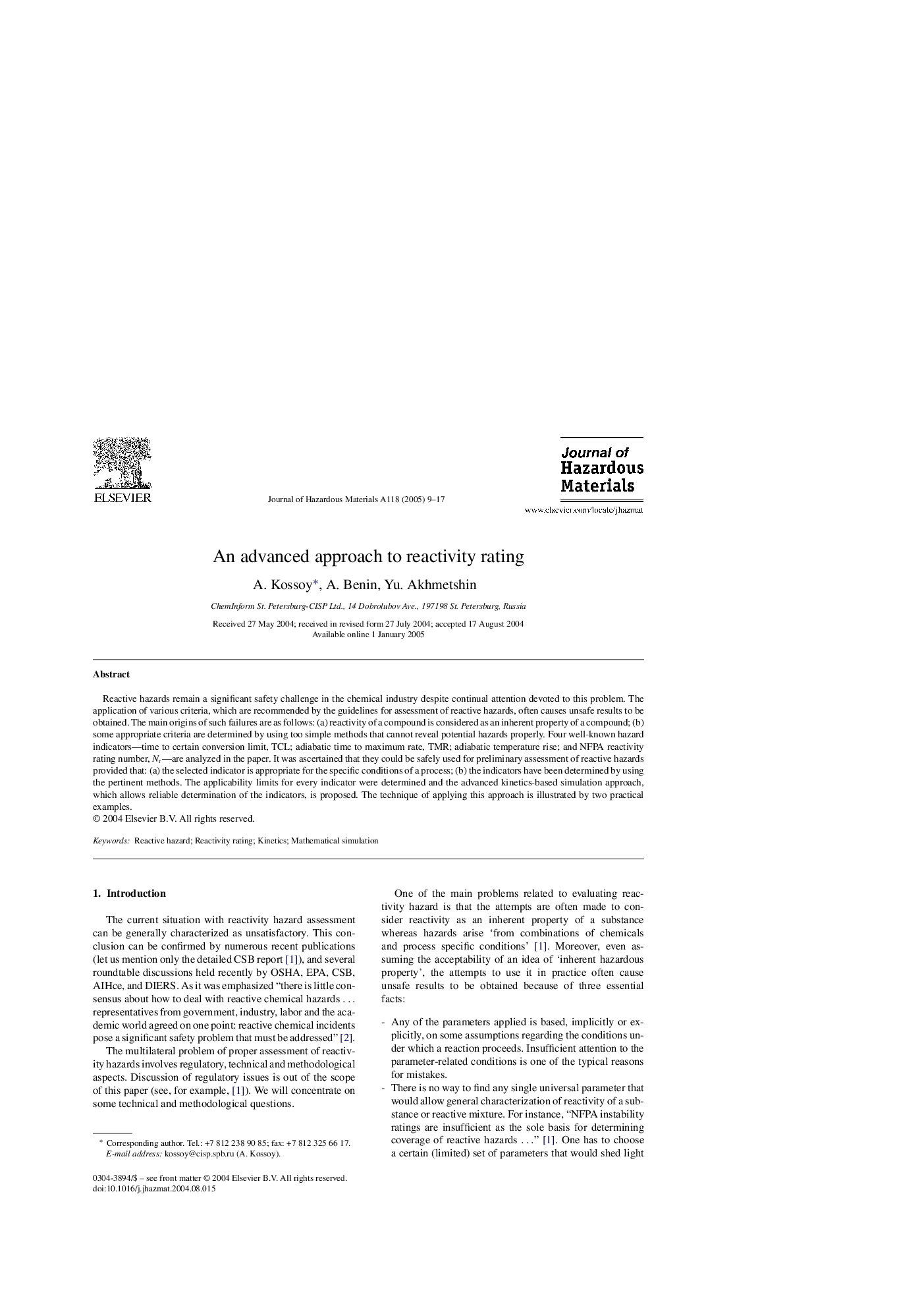| Article ID | Journal | Published Year | Pages | File Type |
|---|---|---|---|---|
| 9674379 | Journal of Hazardous Materials | 2005 | 9 Pages |
Abstract
Reactive hazards remain a significant safety challenge in the chemical industry despite continual attention devoted to this problem. The application of various criteria, which are recommended by the guidelines for assessment of reactive hazards, often causes unsafe results to be obtained. The main origins of such failures are as follows: (a) reactivity of a compound is considered as an inherent property of a compound; (b) some appropriate criteria are determined by using too simple methods that cannot reveal potential hazards properly. Four well-known hazard indicators-time to certain conversion limit, TCL; adiabatic time to maximum rate, TMR; adiabatic temperature rise; and NFPA reactivity rating number, Nr-are analyzed in the paper. It was ascertained that they could be safely used for preliminary assessment of reactive hazards provided that: (a) the selected indicator is appropriate for the specific conditions of a process; (b) the indicators have been determined by using the pertinent methods. The applicability limits for every indicator were determined and the advanced kinetics-based simulation approach, which allows reliable determination of the indicators, is proposed. The technique of applying this approach is illustrated by two practical examples.
Keywords
Related Topics
Physical Sciences and Engineering
Chemical Engineering
Chemical Health and Safety
Authors
A. Kossoy, A. Benin, Yu. Akhmetshin,
